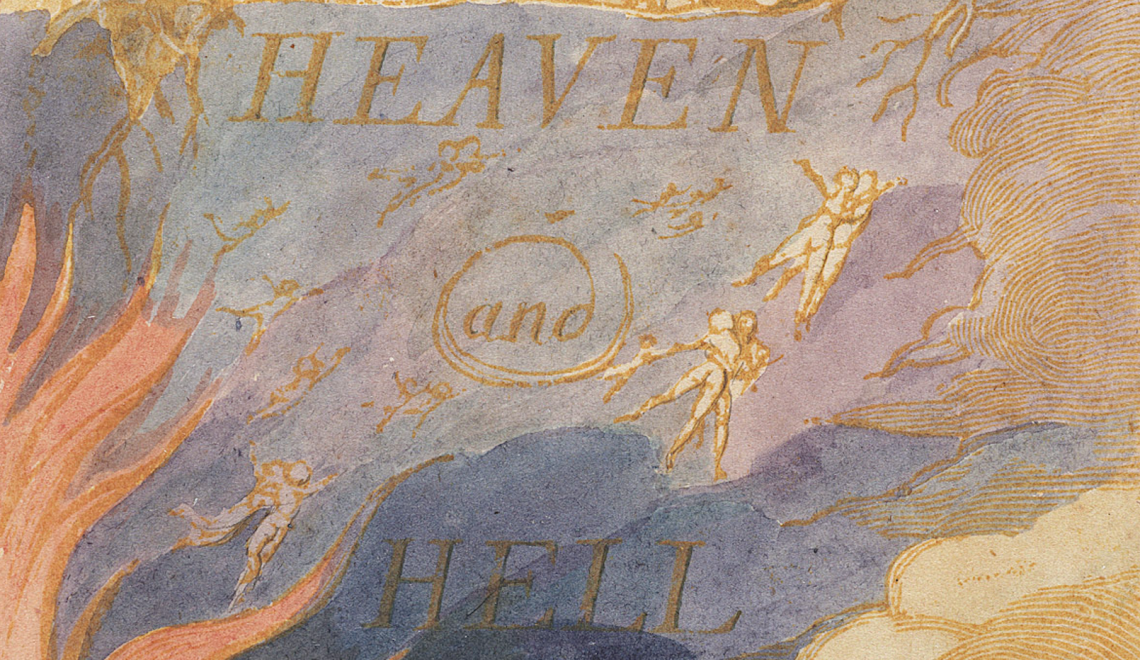The William Blake Archive is pleased to announce the publication of an electronic edition of nineteen of Blake’s tempera paintings illustrating the Bible. They are presented in a new category, “Illustrations to the Bible (c. 1799-1803)”—see Paintings, under Drawings and Paintings, in the table of contents for Works in the Archive. The designs are arranged according to the passages illustrated and are presented in our Preview mode, one that provides all the features of the Archive except Image Search and Inote (which provides detailed descriptions of Blake’s images).
The Bible had an enormous influence on Blake’s work as both artist and poet. Among his many and complex responses to that text is a group of paintings he created for his patron Thomas Butts, beginning in 1799. Most were executed in that year and the next, but at least three were probably completed while Blake was in Felpham, 1802 and 1803. Fifty-three of these “cabinet paintings” (as small works of this type were called in Blake’s time) have been recorded. Only thirty are now traceable, seven based on the Old Testament and the remainder on the New.
This group of nineteen paintings is the second installment in our publication of a large selection of Blake’s drawings and paintings illustrating the Bible. The first installment, a group of twenty water colors with subjects based on the Old Testament, was published in March of this year.
The medium of these paintings, now generally called “tempera,” is water-based with a glue and/or gum binder. Blake was probably trying to create jewel-like paintings; in his Descriptive Catalogue of 1809, he compared them to “enamels” and “precious stones.” He never used the word “tempera” but called his medium “fresco”—a term that recalls Renaissance wall paintings—and claimed that he had invented the new genre of “portable Fresco,” an alternative to paintings in oil. Most were executed on canvas, but three are on copper and one (The Agony in the Garden) is on tinned iron.
Unfortunately, Blake’s medium was inherently unstable. The pigment layers expanded and contracted at different rates. Almost all his temperas of 1799-1803 show considerable surface cracking and other defects; many have been repaired at least once. Some, such as The Miracle of the Loaves and Fishes, have been over-painted in ways that misrepresent Blake’s original work.
The biblical temperas of 1799-1803 can be divided into two groups according to size. Most are approximately 27 x 38 cm., but five of the extant paintings measure about 32.5 x 49.5 cm. The works in the larger size illustrate the life of Christ and may form their own series.
The Fitzwilliam Museum has requested some assistance with The Christ Child Asleep on a Cross, recently presented to the museum by the heirs of George Goyder. The provenance of this tempera painting includes its recovery from a “bombed house in 1940” by the dealer James Rimell of London in 1940 (Butlin 410). The Fitzwilliam Museum would appreciate any information about the owner or owners of the painting prior to its acquisition by Rimell.
Please contact the Department of Paintings, Drawings and Prints: fitzmuseum-pdp@lists.cam.ac.uk
As always, the William Blake Archive is a free site, imposing no access restrictions and charging no subscription fees. The site is made possible by the University of North Carolina at Chapel Hill with the University of Rochester, the continuing support of the Library of Congress, and the cooperation of the international array of libraries and museums that have generously given us permission to reproduce works from their collections in the Archive.
Morris Eaves, Robert N. Essick, and Joseph Viscomi, editors
Ashley Reed, project manager
William Shaw, technical editor

